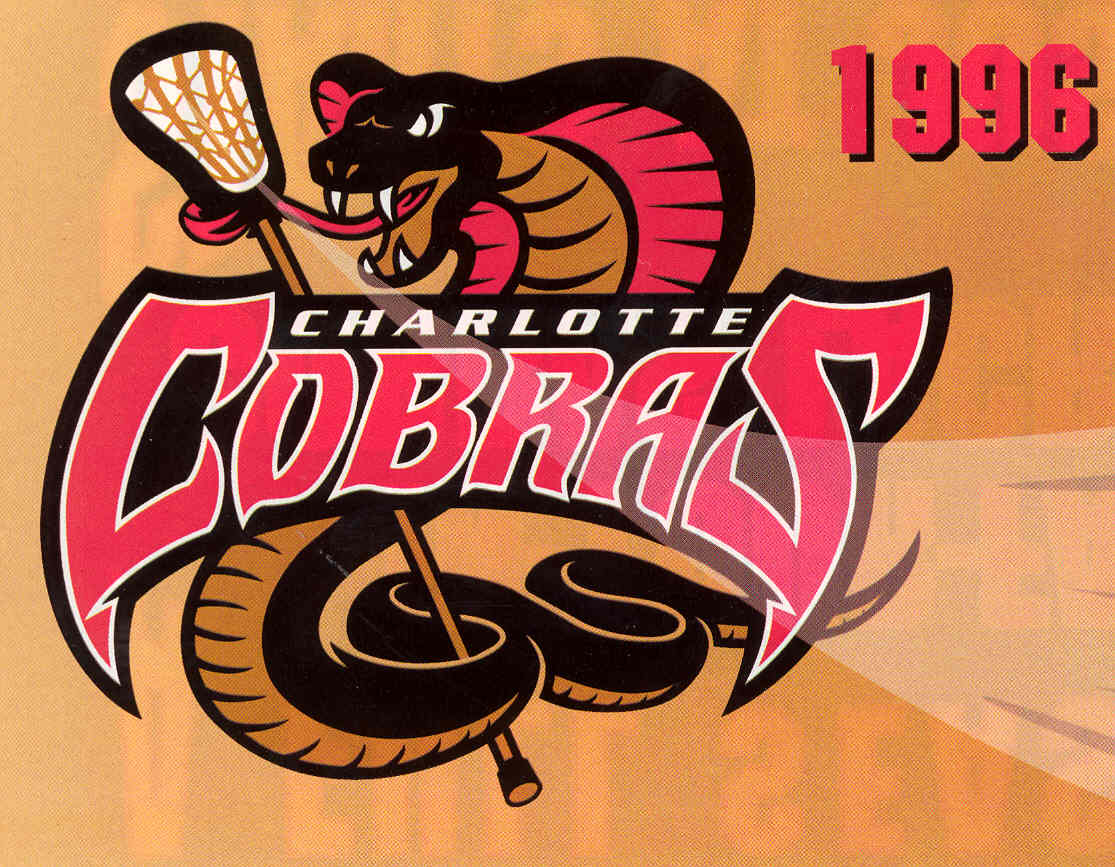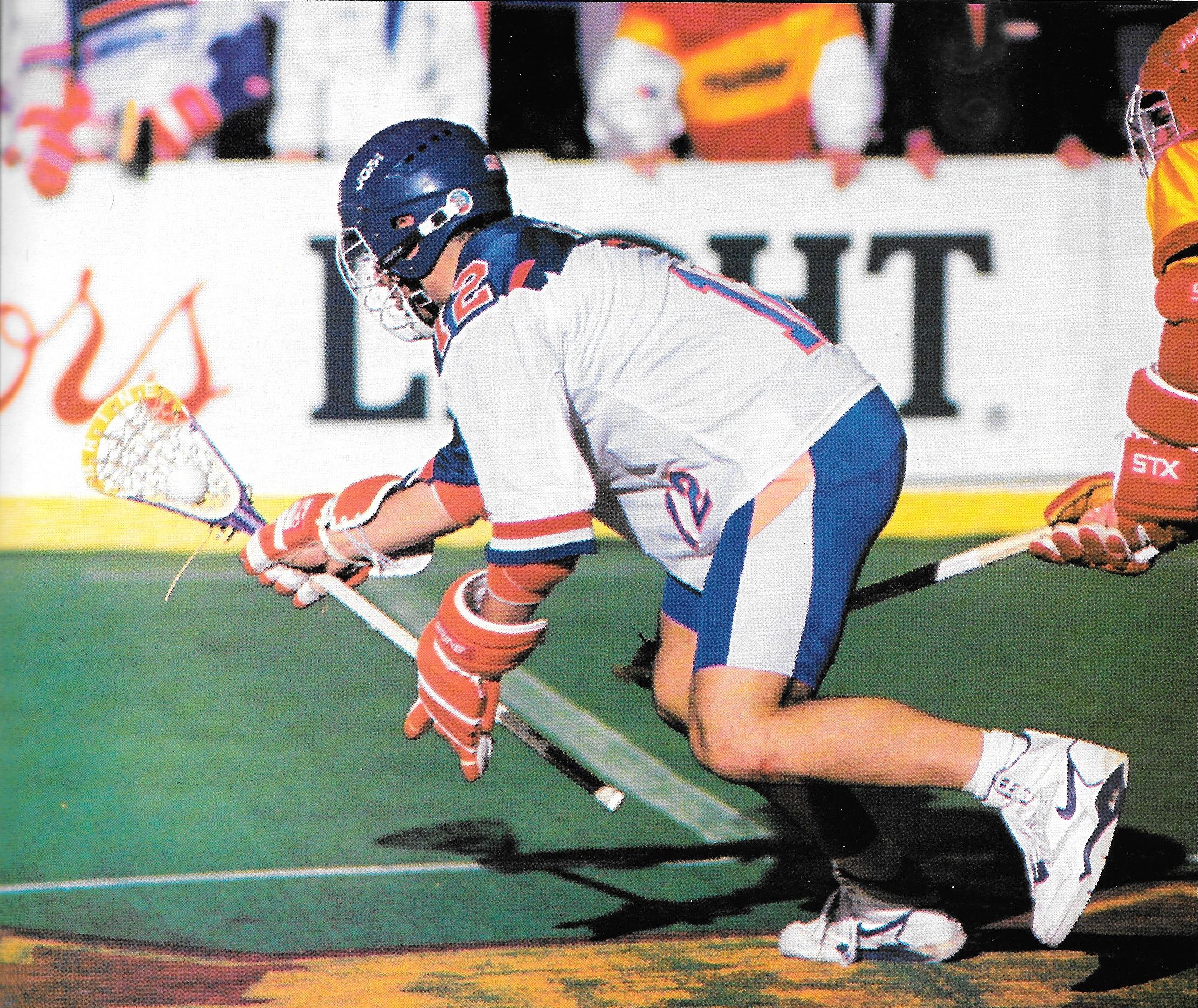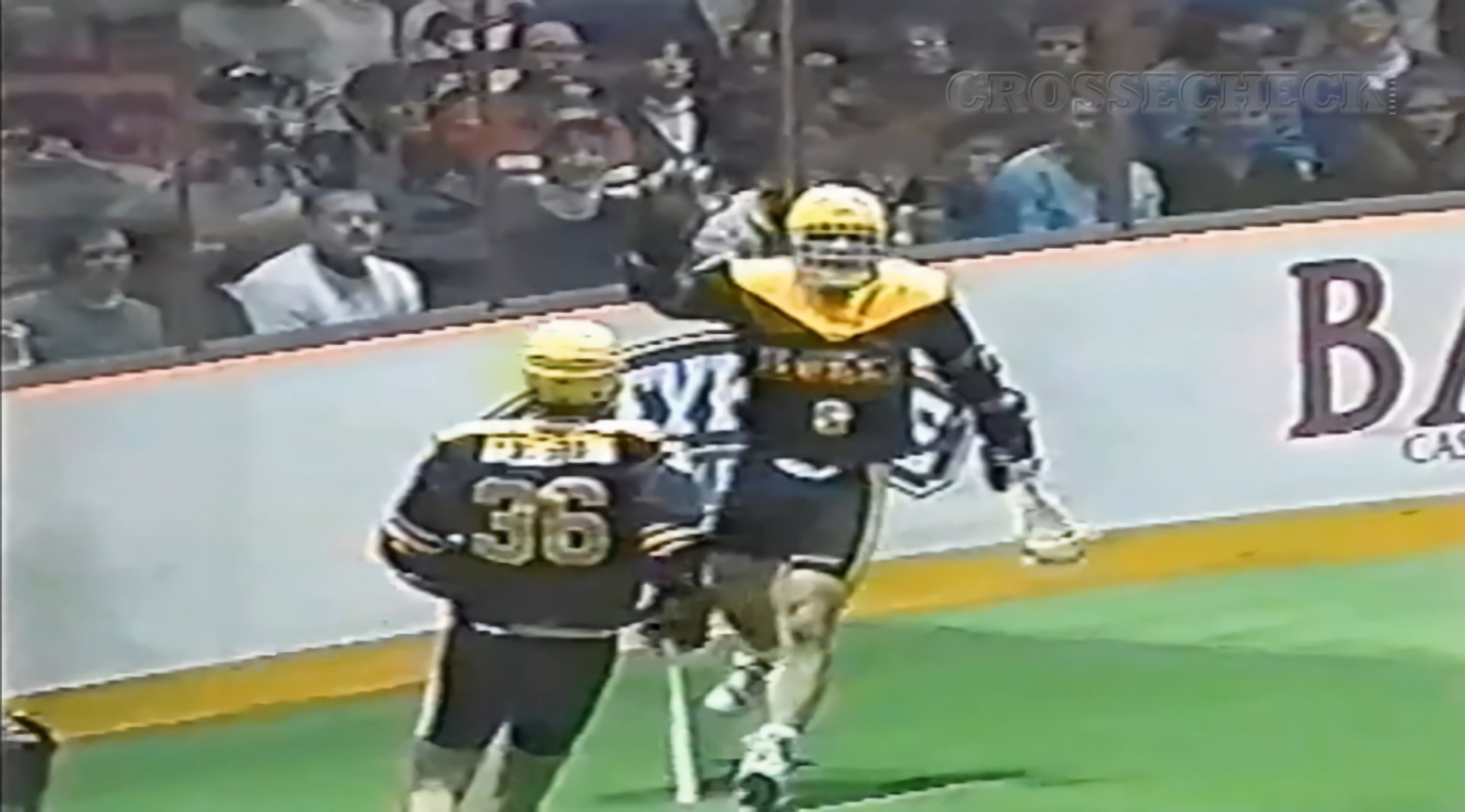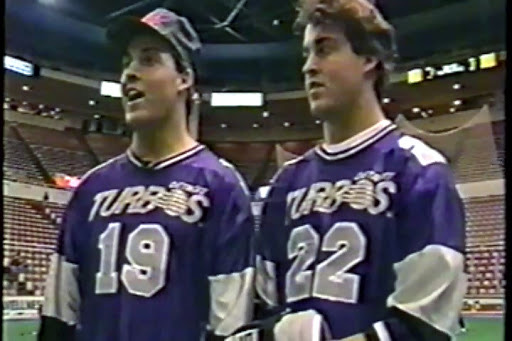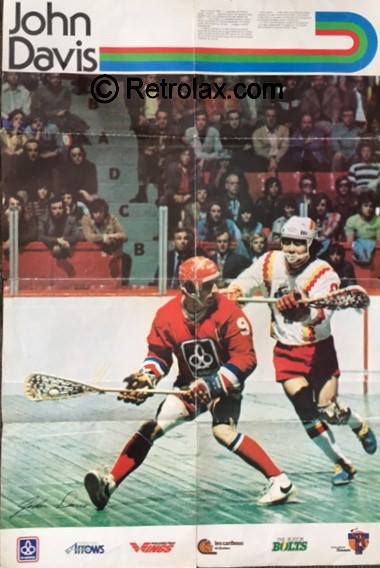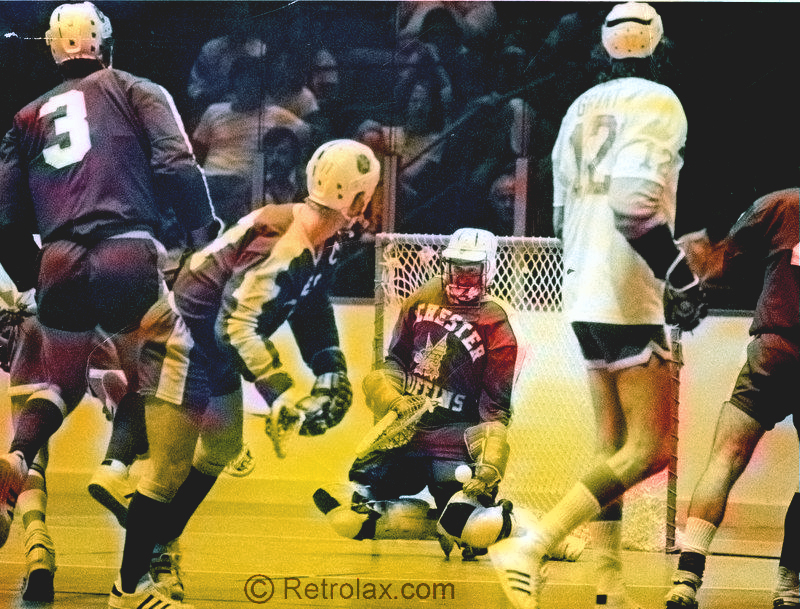By J.L. Miskelly
“I kept this game in perspective. I prepared for them just like any other team,” explained Turbo player Brian Nikula who faced his ex-team, the Pittsburgh Bulls, for the first time (since being traded during the off-season) last week and was a major force in the Turbos’ 25-15 home victory on January 17th.
“He (Nikula) was really pumped up,” said Turbos leader Medo Martinello. “This game brought him into our fold.”
According to Martinello, Nikula (two goals, four assists) went from being an ex-Pittsburgh Bull to a solid member of the Detroit Turbos. This point could not have been driven home more than by the five minute fighting penalty Nikula took against Bulls’ player Sandy Harrison while coming to the aid of one of his Turbos teammates.
For the Turbos this game began as their first home game against Baltimore began: the home team, as the Michigan weather outside, was bitterly cold. After spotting the visitors a 2-0 lead the “Mean Machine” exploded into action. It was all over from there.
“Pittsburgh tried to intimidate us,” Martinello pointed out, “they picked the wrong team.”
Every Turbos player appeared ready for the challenge Pittsburgh was dishing out. The game included three fights and some heavy hitting. The Motor City’s team was so geared up, refusing to let themselves be diverted from their own game plan, that at one point the entire Joe Lewis Arena fan contingent did the wave with Gary Gait orchestrating from the field, and many other Turbos on the bench joining in the festivities as well.
Pittsburgh attempted to employ the intimidation factor, almost single-mindedly, while in the Detroit end of the field. This led to a great number of Turbos breakaways.
Eventually, the Bulls became a study in frustration, as they took unnecessary penalties and made numerous mistakes. Detroit is the one team where you must keep yourself out of the penalty box and play error-free. Completely error-free. There is no room for mistakes as both Pittsburgh, and Baltimore before them, have discovered.
A vital aspect of the contest was the well balanced scoring show put on by the Turbos. With Paul Gait missing from the game (in a plane somewhere over the Eastern half of the U.S.) contributions to the goal scoring task from everyone was a necessity.
“The scoring has been balanced. This is really great for us,” said Martinello.
In his fourth year with the Turbos, Armando Rodrigues was one of those players who stepped up to the forefront. Rodrigues tallied five goals and an assist.
“This was his best game in four years,” Martinello said of Rodrigues, putting an exclamation point on his performance.
BANDITS AWAIT
After losing their inaugural home game against the New York Saints and a second loss to the Saints on Long Island on January 18, both close games, the expansion Buffalo Bandits look to give the Turbos all they can handle at Buffalo’s Memorial Auditorium on January 25th.
The two teams met in the preseason with the Turbos taking a 24-14 victory.
“They have a tremendous amount of talent,” commented Turbos general manager Tom Wright.
Coach Martinello added: “The whole team impressed me in our exhibition game. They’re gonna get tougher.”
Key players on the Bandits roster include rookie John Zulberti from Syracuse University. He is a four year All-America and has twice won the Turnbull Attackman of the Year Award.
Derek Keenan, from Ithaca, NY, also a rookie, is a three time All-America.
Another rookie, (the Bandits are 95% rookies) and an interesting story indeed, is Darris Kilgour.
“I’ve seen him play for the last six years,” said Wright of Kilgour, whose brother, Rich, also plays for the Bandits. “He has the ability to score goals.”
In Buffalo’s first game Kilgour tallied four goals and three assists. Versus Detroit in the exhibition game he tallied four points.
PHYSICALLY FIT
“…200 pounds, six-feet and one inch tall,” describes the public address announcer.
Many people will tell you that this is the ideal size for lacrosse. Specifically, indoor lacrosse.
According to Turbos trainer Brad Oppat, no matter what size you are, the game is so demanding that conditioning is the key.
“The game can afford itself to both small and large players,” explained Oppat. “But conditioning is important. Lacrosse is more demanding physically.”
With a game where the physical pounding one takes can only be equaled to being driven into the boards as in hockey; where the up and down action is indicative of basketball; and necessity dictates acute finesse as in soccer, a conditioning edge can spell a scoring opportunity.
“Without a doubt,” said Oppat, “the better conditioned team has got an advantage.”
(The Indoor Lacrosse Newsletter, Vol. 1, No. 4, January 24, 1992)
(Special thanks to Bob Heyes for providing a copy of the paper)

